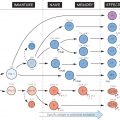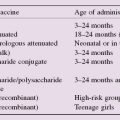Particulate matter that finds its way into the blood or tissues is rapidly removed by cells, and the property of taking up dyes, colloids, etc. was used by anatomists to define a body-wide system of phagocytic cells known as the ‘reticuloendothelial system’ (RES), consisting of the vascular endothelium and reticular tissue cells (top right), and – supposedly descended from these – various types of macrophages with routine functions that included clearing up the body’s own debris and killing and digesting bacteria.
However, more modern work has shown a fundamental distinction between those phagocytic cells derived from the bone marrow (blue in figure) and endothelial and reticular cells formed locally from the tissues themselves (yellow). Ironically, neither reticular nor endothelial cells are outstandingly phagocytic. Their function is partly structural, in maintaining the integrity of the lymphoid tissue and blood vessels, respectively. However, there is increasing awareness that both cell types have an equally important role as ‘signposts’, regulating the migration of haemopoietic cells from blood into the tissues and through the various subcompartments of lymphoid tissue.
In contrast, the major phagocytic tissue cell is the macrophage, and it is therefore more usual today to speak of the ‘mononuclear phagocytic system’ (MPS). The cells of the MPS are now recognized as fundamental to both the ‘recognition’ and the ‘mopping up’ phase of the adaptive immune response (see Fig. 1). Macrophages and dendritic cells act as tissue sentinels, responding to infection and tissue damage via ‘innate’ receptors (see Fig. 5) and signalling the alarm to adaptive immunity via both antigen presentation (see Fig. 18) and the release of powerful cytokines. Once an adaptive immune response is established, one of the main roles of antibody is to promote and amplify phagocytosis, while T lymphocytes serve to activate macrophage microbicidal activity (see Figs 21 and 37).
Endothelial Cell
The inner lining of blood vessels, able to take up dyes, etc. but not truly phagocytic. Endothelial cells direct the passage of leucocytes from blood into tissues, and can both produce and respond to cytokines rather as macrophages do. They can also present antigen directly to T cells under some circumstances.
Reticular Cell
The main supporting or ‘stromal’ cell of lymphoid organs, usually associated with the collagen-like reticulin fibres, and not easily distinguished from fibroblasts or from other branching or ‘dendritic’ cells (see below) – whence a great deal of confusion.
Mesangium
Stay updated, free articles. Join our Telegram channel

Full access? Get Clinical Tree





